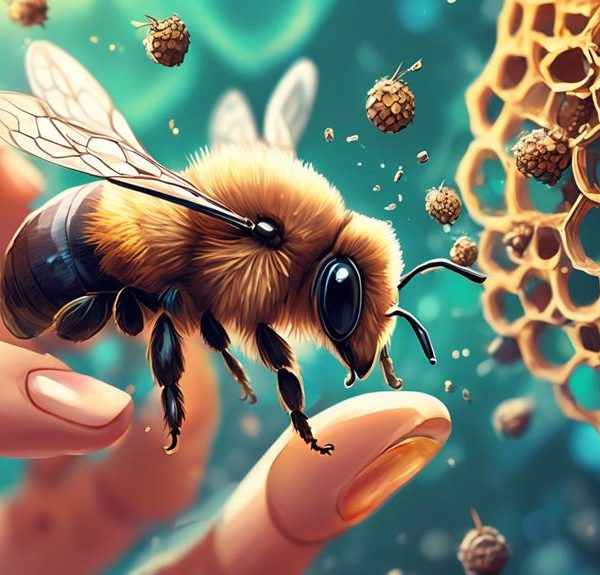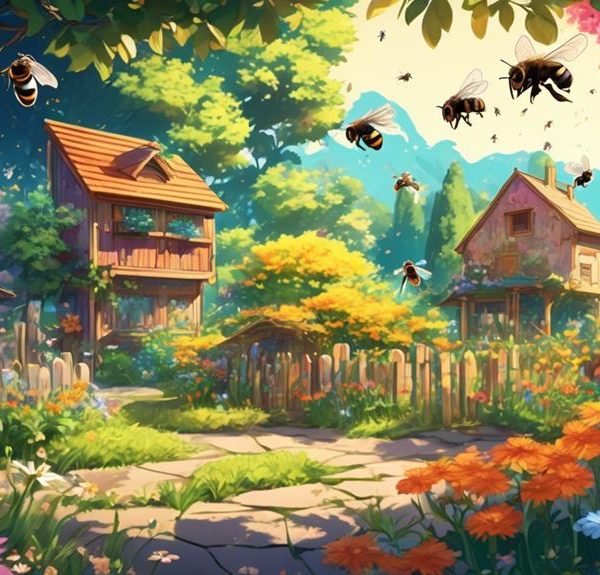Find out about the fascinatingly tiny world of Mason Bee eggs, as small as a sesame seed, and their vital role in our ecosystem.
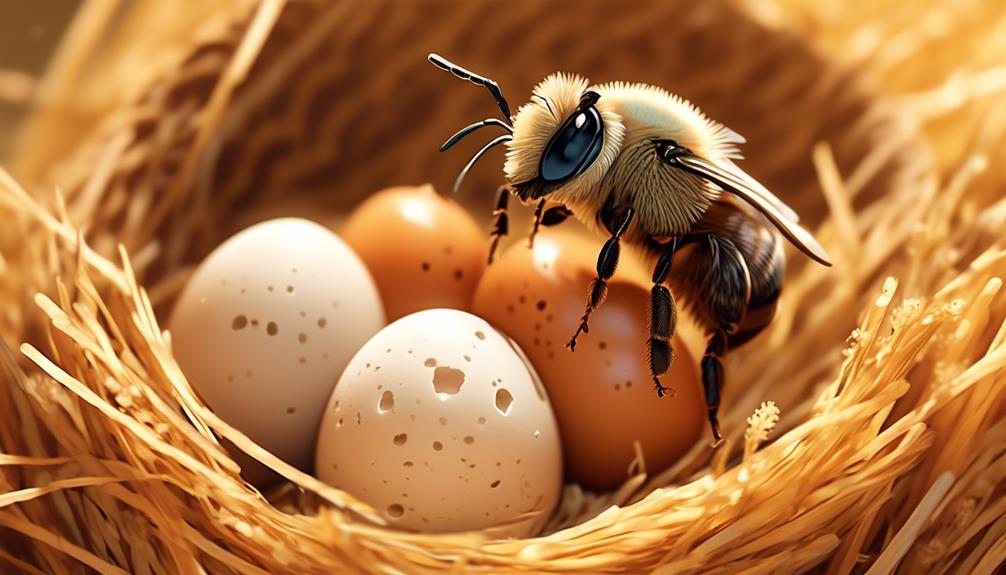
How Big Is a Mason Bee Egg?
As the saying goes, 'good things come in small packages,' and this couldn't be more true when discussing the fascinating world of mason bees. You've likely seen these industrious insects buzzing around your garden, but have you ever stopped to consider the size of their eggs?
Believe it or not, these diminutive wonders are remarkably tiny, measuring only about 0.1 inches (2.5 millimeters) in length on average. That's about the size of a sesame seed! But don't let their size fool you. These little eggs have a big story to tell, one that's intrinsically linked to the survival of their species and the health of our ecosystems.
Curious to find out more? Well, there's much to explore.
Key Takeaways
- Mason bee eggs measure about 0.1 inches (2.5 millimeters) in length and 0.3 to 0.4 millimeters in diameter.
- Mason bee eggs are smaller than honeybee and bumblebee eggs.
- The size of a mason bee egg is designed to fit the confined space of the protective cell made from mud and plant material.
- Factors like species, environmental conditions, and the health of the bee can influence the size of a mason bee egg.
Understanding Mason Bee Egg Size
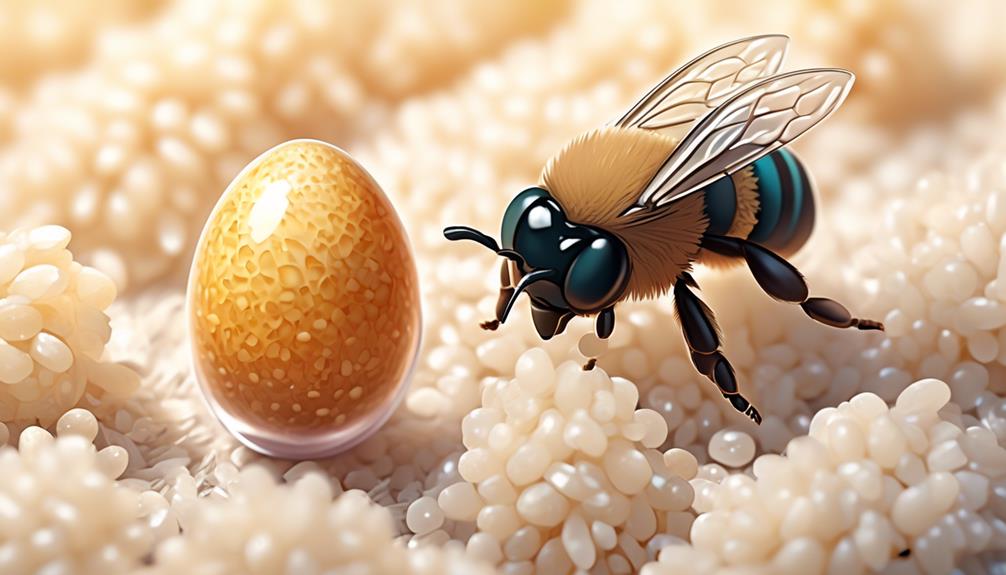
Peering into the intricate world of mason bee eggs, you'll discover that their size is surprisingly small, typically measuring just 0.3 to 0.4 millimeters in diameter. That's almost invisible to the naked eye! This minuscule size is essential for the survival and development of the mason bee larvae.
Despite their tiny size, mason bee eggs play a crucial role in the bee's lifecycle. You'll find them nestled in the narrow tunnels of the bee's nest, each one encased in its own protective cell made from mud and plant material. The female mason bee carefully places one egg per cell, ensuring each one has the resources it needs to develop successfully.
The size of the egg isn't arbitrary. It's meticulously designed to fit the confined space of the cell, while still allowing room for the growing larva. As the egg matures, it feeds on the pollen and nectar mixture provided by the mother, gradually increasing in size. By the time the egg hatches, it will have grown significantly, yet will still fit perfectly within its individual cell.
Understanding the size of mason bee eggs gives you a unique insight into the intricacies of this fascinating species.
Comparing Bee Egg Sizes
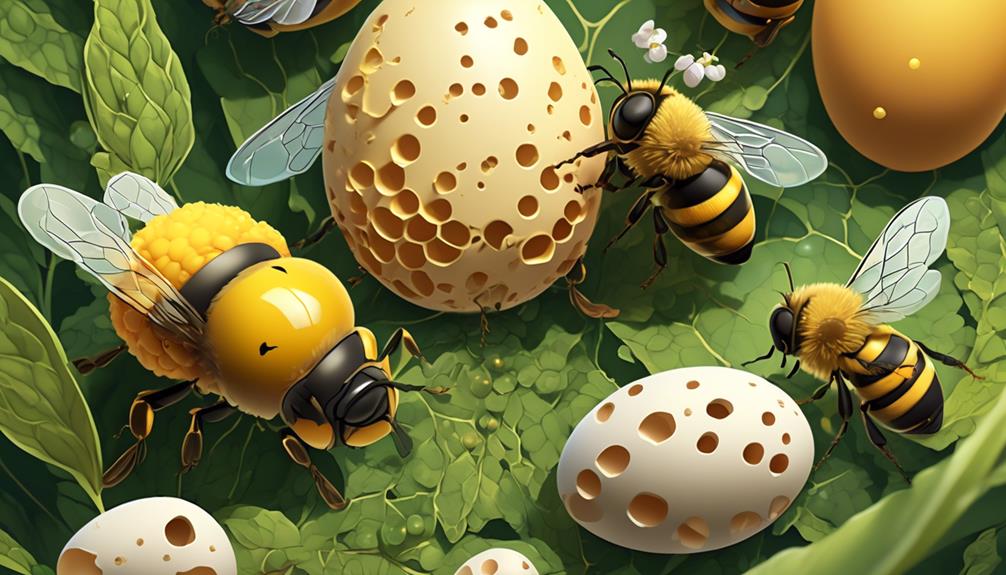
While you've gained insight into the minuscule size of mason bee eggs, it's equally intriguing to compare these with eggs from other bee species. Each bee species, after all, has its unique characteristics when it comes to egg size.
Let's compare the mason bee eggs with honeybee and bumblebee eggs. Here's a simple comparison table:
Bee Species | Average Egg Size (mm) |
|---|---|
Mason Bees | 0.8-1.3 |
Honeybees | 1.4-1.9 |
Bumblebees | 2.1-2.4 |
As you can see, honeybee eggs are slightly larger than mason bee eggs, while bumblebee eggs are the largest among the three. However, it's important to note that these sizes are averages, and actual sizes can vary depending on numerous factors such as the bee's health, diet, and the environment.
Mason Bee Egg Versus Everyday Objects
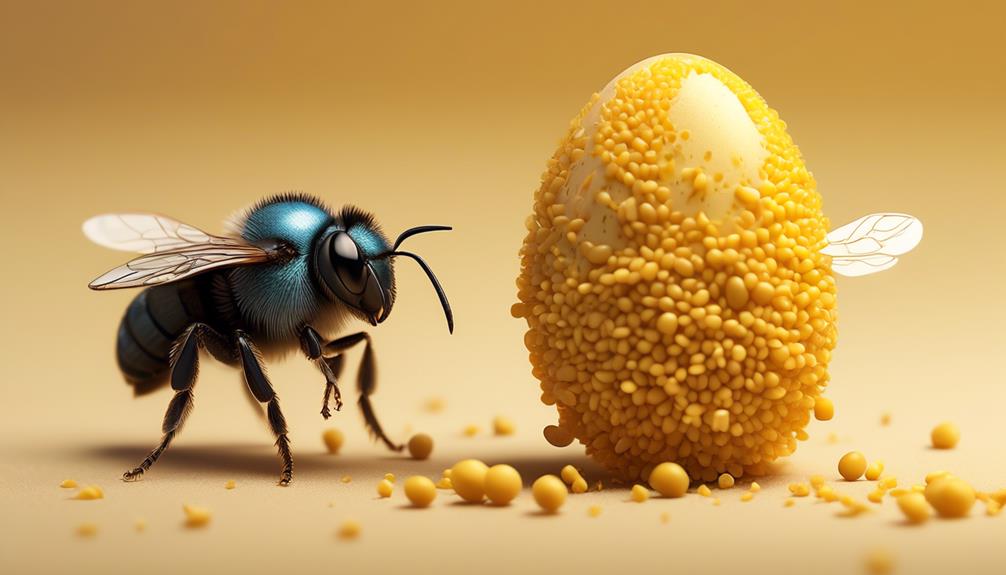
To truly grasp the diminutive size of a mason bee egg, it's helpful to compare it to everyday objects you're familiar with. Imagine a grain of short-grain rice. A mason bee egg is even smaller than that, measuring about 0.8 millimeters in length and 0.2 millimeters in width. Put another way, you'd need a magnifying glass just to discern its shape properly.
On a coin scale, it's like placing the mason bee egg on the surface of a penny. It would be dwarfed by the size of Abraham Lincoln's portrait. You'd need around 250 mason bee eggs lined side by side to match the diameter of a US penny.
Comparing it to a sesame seed, the mason bee egg is roughly half the size. If you've ever seen how tiny a pinhead is, then you can imagine that it's about twice the size of a mason bee egg.
Factors Influencing Mason Bee Egg Size
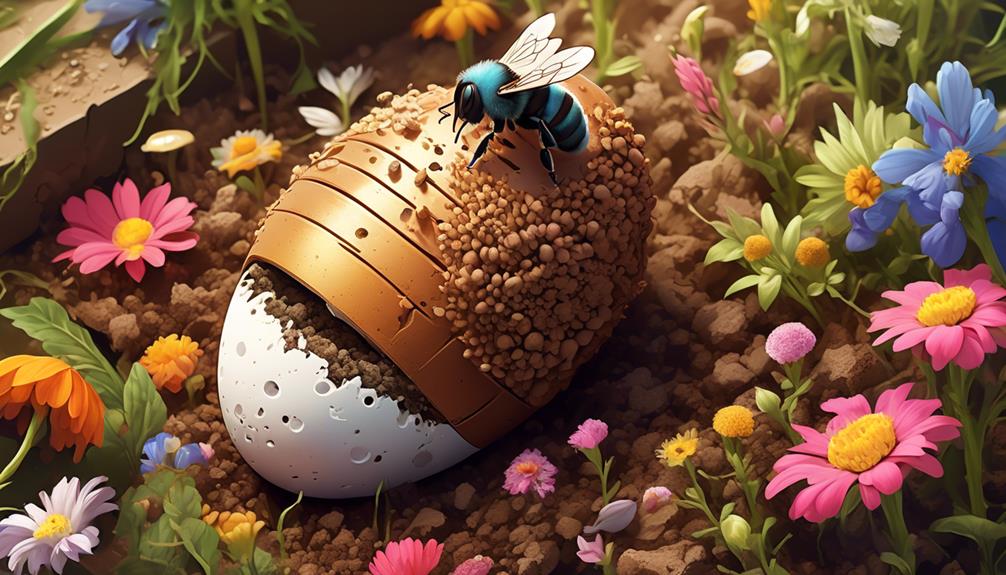
Now that you have a firm grasp on the tiny size of a mason bee egg, let's explore the various factors that can influence this minuscule dimension. The size of mason bee eggs isn't constant and can be affected by several elements.
Firstly, the species of the bee plays a crucial role. Different species of mason bees lay eggs of varying sizes.
Secondly, environmental conditions such as temperature and food availability can influence egg size. Warmer climates tend to result in smaller eggs, possibly as an adaptation to reduce the risk of desiccation. Additionally, a plentiful food supply can lead to larger eggs.
The age and health of the female bee can also impact the size of her eggs. Older, more experienced bees often lay larger eggs than their younger counterparts. Equally, a healthy bee with a balanced diet is more likely to produce larger eggs.
Lastly, the season in which the eggs are laid can influence their size. Typically, eggs laid in spring are larger than those laid in autumn, potentially due to better availability of resources.
Therefore, it's clear that several factors collectively determine the size of a mason bee egg.
Importance of Mason Bee Egg Size
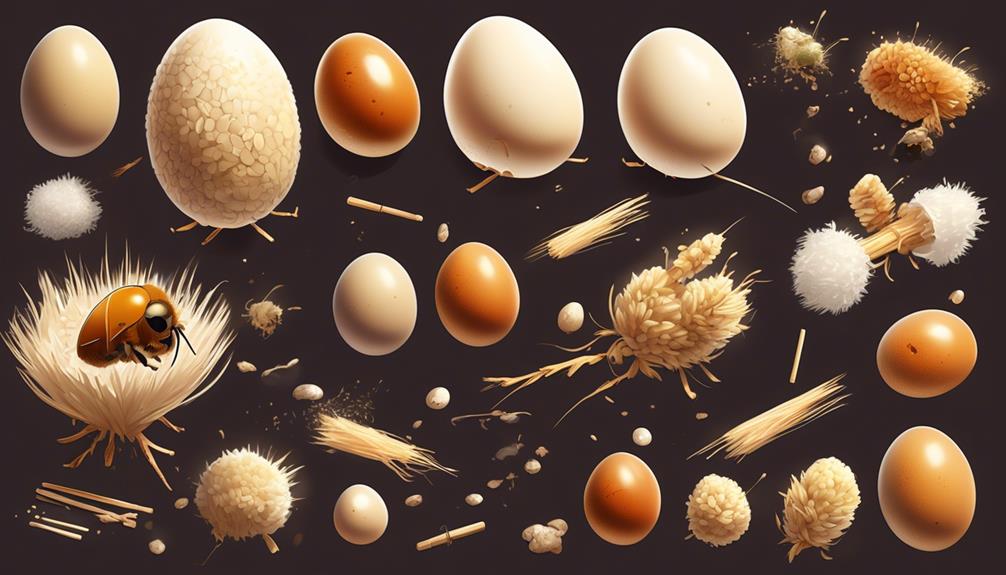
Delving into the significance of mason bee egg size, you'll find that it plays a crucial role in the survival and growth of the bee population. The size of the egg influences the development and future success of the emerging bee.
Scientifically, the bigger the egg, the more nutrients available for the developing larva. This nutritional head start allows the larvae to grow healthily, leading to robust adult bees that can forage effectively and contribute to plant pollination. The larger the egg, the more likely the bee will survive to adulthood, enhancing the overall population stability.
Conversely, smaller eggs may indicate nutritional deficiencies or environmental stressors, implying a less favorable prognosis for the offspring. In such cases, the resulting bees are often smaller, weaker, and have shorter lifespans, affecting the colony's productivity and survival.
Furthermore, the egg size plays a part in determining the bee's sex. Females, which are larger and more nutritionally demanding, typically hatch from larger eggs. This size-sex correlation is essential as a balanced sex ratio is vital for the colony's reproductive success.
Conclusion
In conclusion, a mason bee egg is remarkably small, roughly the size of a sesame seed. Despite its size, it plays a crucial role in the ecology. Factors like temperature and nutrition can affect its size.
Understanding the size of a mason bee egg not only gives us insight into the fascinating world of these bees but also helps us to appreciate the intricacies of nature. It's a small detail with big implications!

